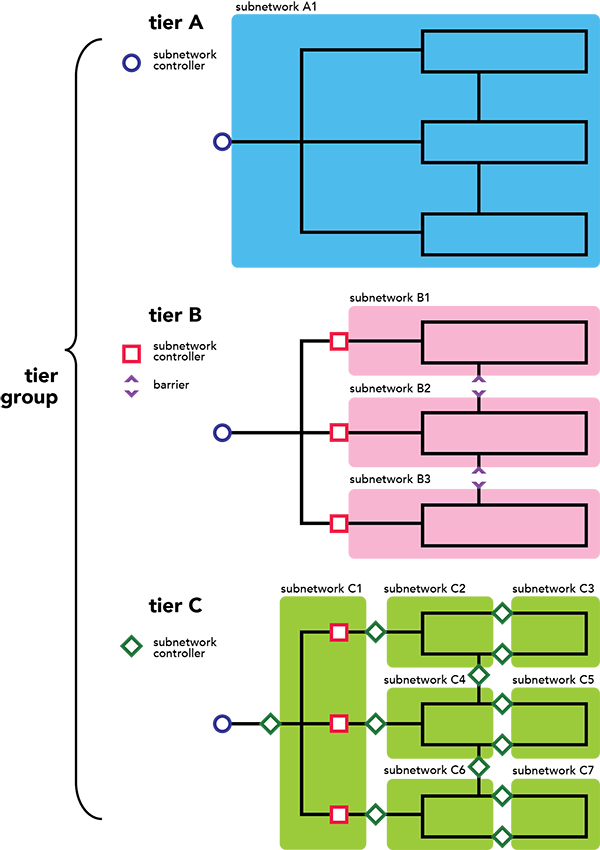Tier groups allow you to organize your system in traditional domain networks that have a hierarchical tier definition. They are defined during the configuration stage of a utility network by the administrator using the Add Tier Group tool. Tier groups are required to add tiers to a traditional domain network with a hierarchical topology type that represents systems such as water, gas, and wastewater. Tier groups are used to model the various sectors of those types of networks—for example, gathering, transmission, distribution, and cathodic protection. If you manage or model only one sector—for example, distribution—you must still create one domain network with one tier group to manage your assets. If you need additional sectors in your network—for example, cathodic protection—you can add them without significantly adjusting the model.
Tier groups are not used in the modeling and organization of tiers in partitioned systems, such as electric, and do not apply to telecom domain networks. Sector organization of these industries is modeled at the domain network level. To learn more, see Traditional domain network properties.
The following image shows an example diagram for tier groups and tiers in a hierarchical network:

The following illustration shows how tiers in a tier group have overlapping definitions in a network diagram. The defining features of subnetwork extents in a tier are subnetwork controllers and barriers.
